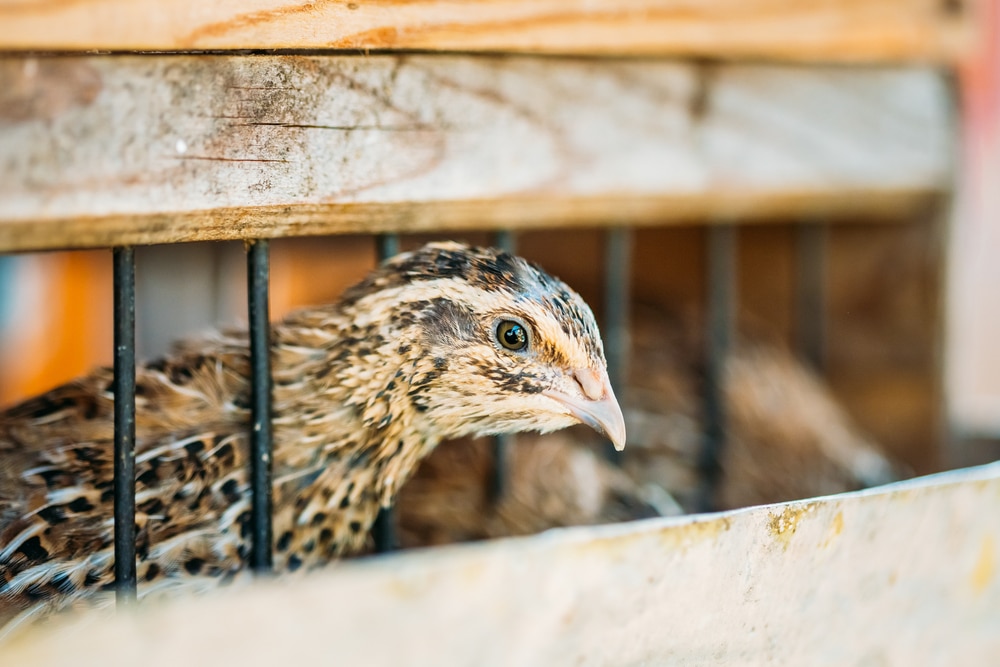If you have been raising chickens for quite some time now, you might be wondering whether it might be time to extend your backyard run to quail, too.
These birds are incredibly popular among backyard poultry enthusiasts because they are compact and small, yet offer homesteaders a variety of benefits.
The quail is one of the best species you can raise – regardless of whether you are living in the country or in a more urban area.
What Are Quail?
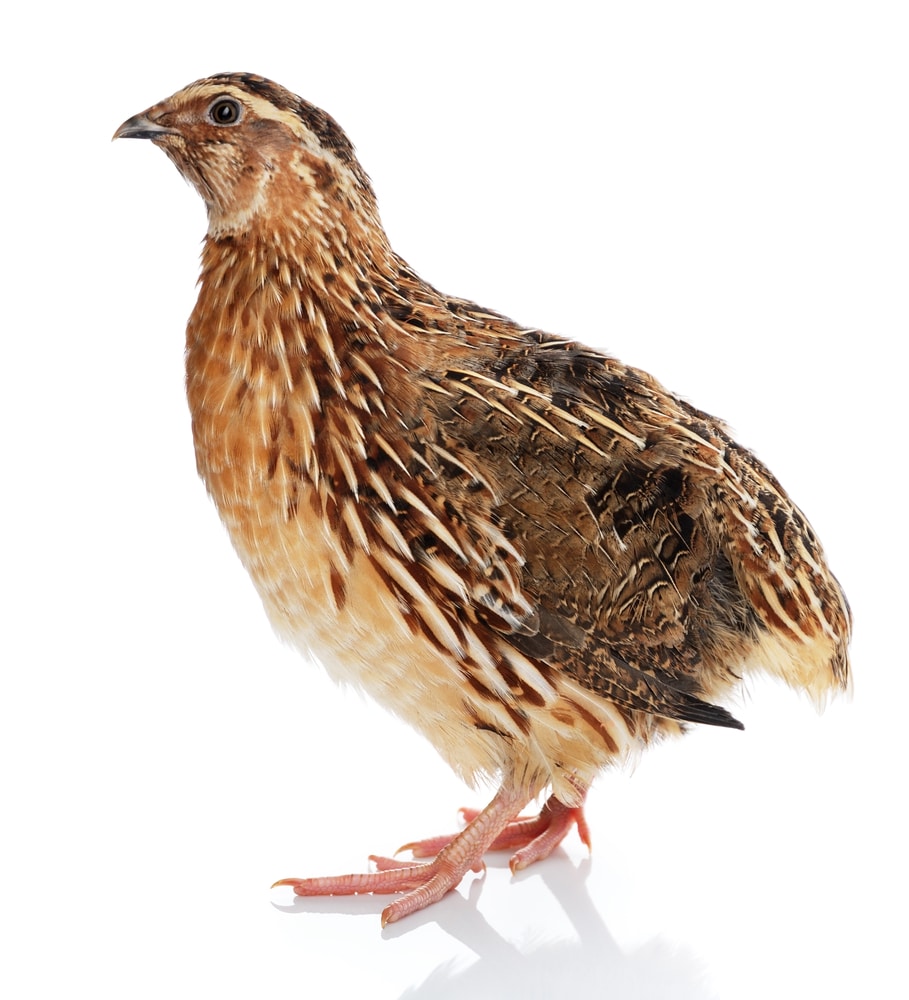
Technically a member of the pheasant family, quail are small birds that are closely related to partridges.
While most people tend to lump all quail together into the same group, this species is actually quite large, with more than a hundred different recognized breeds of quail. Just like chickens, these birds are distributed all around the world.
Although quail aren’t necessarily considered farmyard birds like chickens, and are instead considered wild game birds, they are gaining popularity as backyard livestock.
However, it’s important that you know the difference between the many types of quail, since not all breeds are best for backyard farmers.
The most common birds for backyard farmers (and those that are the easiest to raise) include the Coturnix, the California Quail, and the Northern Bobwhite Quail. The California Quail is, in fact, so popular that it is the state bird of California!
Raising quail is quite similar to raising chickens, but there are some differences that you need to be aware of, too.
So while you’ll have a leg up on the adventure if you’ve raised chickens in the past, just know that there are some key differences between the two.
Luckily, learning the basics of raising quail is relatively easy to do – and that’s what we’re here to teach you!
Reasons to Raise Quail
Here are a few reason why raising quail can be a great choice:
Size
Quail are unique because they are tiny game birds, with most smaller even than a bantam-breed chicken.
While smaller isn’t always best for everyone, it makes quail an ideal species of poultry for people who live in crowded urban areas.
You can keep your quail on your balcony or even in a small backyard coop or cage without too much trouble.
Most cities and suburban areas have restrictions on keeping chickens.
However, you can often get around this restriction by exploring a small but seldom-considered loophole – raise quail instead!
Most regulating bodies in urban areas simply don’t know about – or aren’t even sure how to even begin to categorize or restrict ownership of -these birds.
If you’re truly pressed for space you can easily keep quail indoors. Raising quail outdoors is definitely preferable, as they will have more room to stretch their legs and tiny wings, but it can easily be done inside, too.
Just make sure you have proper measures for sanitation in place to avoid issues related to smell, disease, and other issues.
In fact, the average quail only weighs about five ounces!
That’s incredibly small, so while quail might not be best for the Thanksgiving Day table, they’ll still provide plenty of delicious, interesting meat for you to enjoy.
Yes, even if you live in the middle of a crowded city!
Behaviors
Quail are much quieter than chickens, too.
Most are practically silent throughout most of the day- even the roosters (males) pale in comparison to chicken roosters.
You may hear a bit of light trilling or cooing, but that’s it. These noises can hardly be described as annoying or distracting in any way.
In fact, most owners report that the songs their quail make are sweet, soothing, and beautiful.
Meat
Quail can easily be raised for meat. Although you won’t get as much meat from a quail as you would from other popular species of poultry, like chickens, ducks, and of course turkeys, you can still yield a fair quantity of meat in a very short amount of time.
In fact, quail eggs are ready for hatching in just eighteen days – three days less than the average chicken egg.
Plus, it only takes about seven weeks for a quail to mature, so you can harvest it for meat much more quickly.
Not only will your group of backyard quail take up less space than your chickens, but they’ll also produce meat and eggs for you while doing so, too.
What’s more is that quail meat is pretty much impossible to find at the local grocery store.
You can try to sell your quail meat to local restaurants or even at a farmer’s market – just be sure you check the local laws.
Eggs
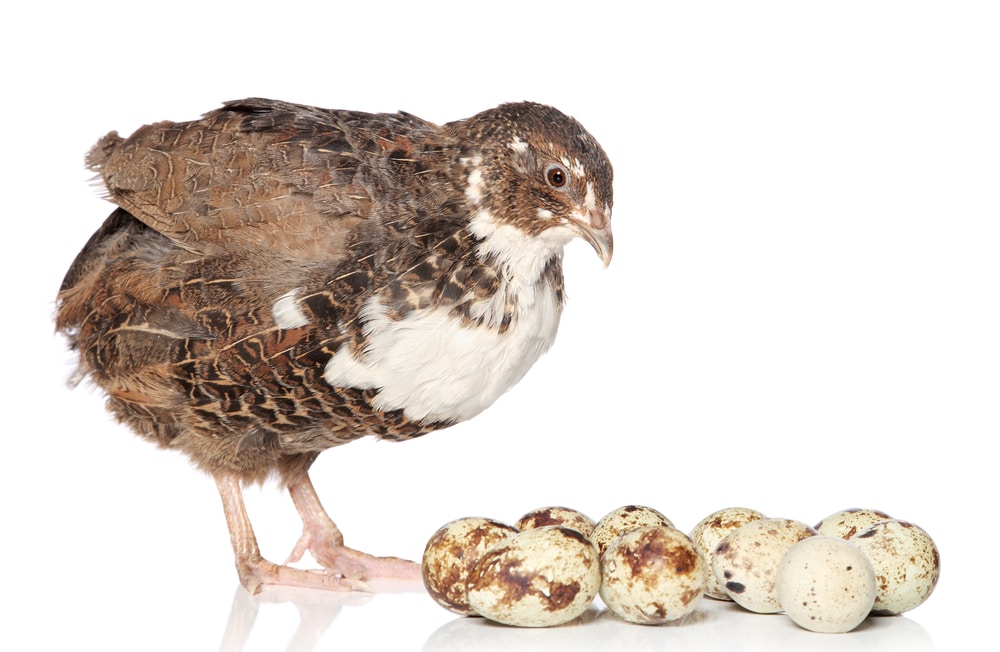
Just one quail on its own can produce an egg every day, and although they are of course smaller than the eggs of chickens, they are prolific.
You’ll get eggs every day as opposed to every few days.
Plus, the taste is similar, with some chefs reporting that they actually prefer the taste of quail eggs to chicken eggs.
Plus, since quail mature more quickly than chickens and other types of poultry, they can lay eggs much sooner too.
Most quail can lay at just two months old – this is compared to the chicken, which can take three months or often more.
Although the eggs are small, they are absolutely spectacular to behold. They can be many different colors, but most are cream-colored with flecks and specks of red, brown, and orange shades around the shell.
Just like chickens, female quail can lay their eggs regardless of whether a male is present.
Beauty
All other practical reasons aside, quail are some of the most popular species of poultry to raise because they are absolutely breathtaking to look at.
They have small builds and can be found in plenty of colors. They offer a new ornamental quality to your farm and are prized for their decorative abilities.
Ease of Start-Up
Quail is incredibly affordable to raise. You can easily purchase just a couple of quail for a couple of dollars.
Raising them doesn’t cost much more, nor does feeding them. However just keep in mind that for breeding purposes, you will want to keep at least three females for every male.
A balanced hen-rooster ratio not only helps prevent pecking order issues, but also prevents overbreeding.
Feathers
If you like to fly fish, you probably already know how wonderful quail feathers are for creating lures.
Since they are so small and delicate – along with intricate – they work well for certain types of flies.
As a result, they are widely sought-after by artisans and anglers alike.
Manure
Just like manure from other poultry species, like chickens, quail droppings are wonderful fertilizers.
Quail manure can be used on your own crops or you can sell it to other gardeners. Just make sure it is composted and aged well, as the manure is high in nitrogen and can easily burn your plants.
You might want to add some compost or straw to balance it out for a year or so before adding it to your garden.
What Do Quail Look Like?
Quail are game birds, and with many varieties of quail available, there is no shortage of patterns, colors, and styles that your quail can have.
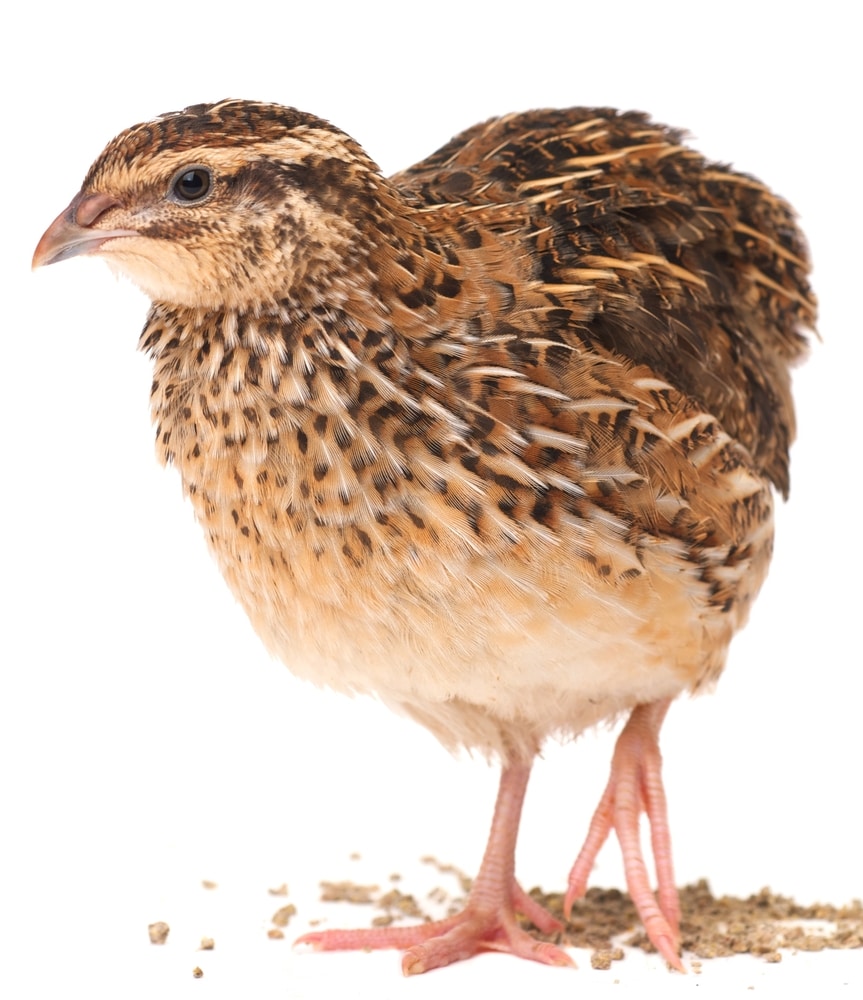
There is some variation between the individual type of quail, but most are small with lots of flare.
Quail have round bodies with males that are more brightly colored than females. Females are slightly larger than males.
They can be found in all kinds of colors, including grey, black, white, and brown. Their bellies have scale-like patterns.
For the most part, quail have dark features, but not always. You can find just about any kind of pattern. After all, there are more than 100 different species of quail.
If there is a certain pattern you want, you will likely be able to find it – just keep in mind that you will likely need to pay more money.
Common Quail Behaviors
Quail are ground-dwellers that like to hang out low to the ground.
They aren’t fond of flying, but they can take flight if and when they so choose to do so. They typically fly in order to escape danger and confuse predators.
What’s interesting about the manner in which a quail flies is that it does not fly in a straight line. It flies in a sporadic, seemingly unpredictable manner, which helps the bird as it attempts to avoid predators.
While quail can fly somewhat higher than chickens, they aren’t really that good at it.
Their flight duration is relatively short since they spend so much energy getting up in the air.
The best time to catch a quail if you need to (usually to inspect it for medical reasons) is in the evening when the birds are asleep. Otherwise, they will easily get away from you.
Generally, quail are very friendly birds.
They have the ability to recall and respond to their owners and will, over time, become adjusted to your presence.
They aren’t terribly fond of being held, which is something you might already be used to with your chickens.
However, you might be able to teach your quail to at least sit in your hand – it will just take some time. This is something you need to start young, too.
While quail are known for being quite a bit quieter than chickens, it’s worth mentioning that they aren’t totally silent. Roosters still crow!
Although they are much less noisy than chickens, they will still crow frequently and will engage in competitions with each other to see who can make the loudest noises.
However, a quail rooster crow is not nearly as loud and alarming as a chicken’s. Instead, it will be brief and quick, more like a pronounced yawn than a harsh, drawn-out crow of a chicken rooster.
Quail also are not good at flying. They aren’t graceful and prefer instead to spend much of their time on the ground, foraging for tasty morsels. Just like chickens, quails will search for treats by scratching, eating plenty of worms and bugs. As juvenile quail age into mature birds, they will naturally switch over to a mostly-vegetarian diet, only eating berries and seeds.
Wondering if you can allow your quail to free-range? That’s up to you. Just keep in mind that, although they can’t really fly that far, quail are curious birds that love to travel. You really can’t count on them to stay within a predetermined area for you. In addition, since quail are so small, they are much more susceptible to attacks from predators.
If you want to allow your quail to free-range, you will need to provide appropriate shelter and fencing so that they are out of the reach of predators.
Where to Buy Quail
You can purchase quail just as you would purchase any other type of poultry: you can buy some chicks at just about any online hatchery or from a breeder, or you can purchase hatching eggs.
Most quail varieties can be ordered via mail. If you’ve ever ordered chicks in this manner, you likely already know the importance of making sure you have the right supplies on hand before you bring your quail home.
You can also purchase quail from a local breeder. It can be difficult to find breeders in your local area, but doing some research can really pay off. Not only will you save on the expense of shipping the birds to you, but you may be able to invest in birds that are more adapted to your local area. There are websites dedicated to poultry breeders where you can research quail breeders in your area, or you can go to poultry shows or swap meets near you.
Finally, you can also purchase your own hatching eggs. Depending on where you live, this can either be the most or least cost-effective option. You will need an incubator in order to get started with this adventure, but keep in mind that you will be able to hatch your eggs in just eighteen days!
Hatching Your Own Quail Eggs
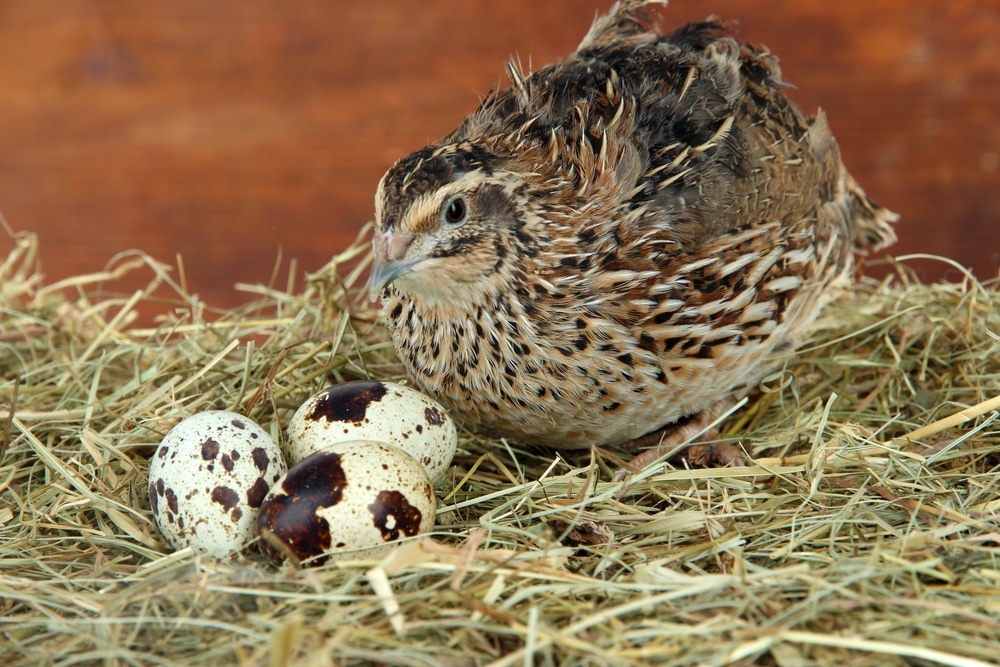
Deciding to hatch your own quail eggs is a smart choice, particularly if you already have an incubator and are able to commit a little bit of time each day to the endeavor.
Incubating and hatching quail eggs is just like hatching eggs from other species of poultry. You will want to aim for 45% humidity for the first 15 days and increase the incubation to 65% for the last three days.
Your quail eggs will incubate at similar temperatures to chicken eggs (99.5 degrees Fahrenheit). Remember, you will need to turn the eggs every two to four hours to prevent the embryos from sticking to the shell.
Equipment Needed to Raise Quail
You will want to invest in good feeders and waterers. For a feeder, look for one specifically designed for quail. It will have a smaller opening that can prevent messes and will be ideal for both a coop or a cage.
Drinking founts that you might already have for your chickens can also be used for your new quail, but you will need to pay attention to their location. An elevated drinking fount is best. Quail like to forage and play and are almost guaranteed to spread feed and dirt into their drinking water supply.
If you are raising very young quail or chicks, make sure you add some pebbles into the bottom of the drinker – as with chickens, this will prevent the little ones from drowning. Otherwise, any kind of drinker will work for your quail of any age. Automatic, or nipple waterers, are growing increasingly popular as they help keep the water clean and spill-free.
Housing for Quail
Many people raise quail in cages instead of coops. This makes it not only easier for you to care for your birds (and save money) but also to keep them safe from predators. Either a coop or cage is fine, but make sure you provide your birds with at least one square foot of room at a very minimum.
Some people, especially those who have raised chickens in the past, are hesitant to confine their quail to a coop or cage. However, quail are unique in that they thrive in more confined spaces. While it’s true that you should provide as much space for them as possible, you really don’t need as much space as you would for larger birds like chickens, ducks, and turkeys.
One thing you will want to add, though, is a flight pen. Some people raise quail with the ultimate goal of releasing them into the wild. Therefore, you need a pen that will help train your quail to learn how to fly.
Either give your quail access to an attached run from the very beginning, or transport them to the flight pen at about one or two months of age. This flight pen needs to be relatively large so that your quail can get a feel for their developing wings and figure out how to fly and flush. The cage should provide at least two square feet per bird.
Don’t forget the nesting boxes, either. Quail hens need nesting boxes just like chickens, but keep in mind that it won’t always guarantee that your eggs will be laid in exactly the same spot each time. Quail are unlike chickens in that they aren’t picky in where they lay eggs.
What to Feed Quail
Luckily, quail are super easy to feed. They are generally considered omnivores, but quail actually will eat a diet comprised mostly of seeds and grains. Occasionally, they will also eat plant matter, worms, and bugs.
Each type of quail will be different in terms of its dietary needs – after all, these birds evolved in different settings all over the world. Many people use chicken feed for their quail, but you need to be careful in doing this because the feed isn’t formulated for quail.
The best food for quail will be a game bird feed. This will include the extra protein your birds need to build up their energy reserves so they can learn how to fly. Commercial game bird feed is specially designed for birds in the pheasant family, including quail, partridges, and grouse.
As with chicken feed, game bird feed is available in pellet, mash, and crumble. Crumble is the best choice for quail, since mash can cause a mess and pellets are too big for a quail’s sensitive stomach.
When your quail are young, you will need to feel them a starter feed. This should have about 30% protein. You’ll only need to give each young bird about a pinch of food each day. Later, you can switch to a 20% protein. Medicated feed is not necessary.
Common Quail Predators
As you might expect, quail are frequently subjected to predation because they are so small and delicate. You will need to worry about all manner of beats, from hawks and eagles and owls to raccoons, coyotes, foxes, opossums, and small rodents. Even cats will go after quail.
Rodents like rats and weasels will go after quail, too, which is why it is so important to make sure your coop or cage are completely sealed and not susceptible to an attack. Make sure the housing is secure (no unsealed gaps!) and keep the quail feed out of the reach of pests and predators alike.
Common Quail Diseases
Quail are generally quite healthy birds that keep themselves free from pests by keeping up with their own personal hygiene. They do this just as chickens do – by using dust baths. Dust baths are beneficial to get rid of mites, lice, and other pests that can hitch a ride in the quail’s luxurious feathers. It also helps to keep the feathers and oil glands of the bird in check.
Although you can keep quail in a small, confined area with few ill effects, keep in mind that doing so can lead to increased susceptibility to disease. Therefore, providing plenty of space and rigorous coop cleaning policies are vital.
The most common quail disease is ulcerative enteritis. Also known as quail disease, this disease is almost always deadly if not promptly treated. It causes issues like diarrhea, lethargy, and droopy wings. It’s highly infectious and can spread to other types of poultry, too.
Quail are also prone to certain respiratory infections. Quail droppings have higher levels of ammonia than the droppings of other types of poultry, so you’ll need to clean your quail housing more often to prevent disease.
Is Raising Quail Right For Me?
Quail are beautiful, exotic birds that are not only fun and easy to raise, but are also dual-purpose. The perfect `starter” game bird, the quail is ideal for someone who doesn’t have a lot of space yet wants to give the idea of animal husbandry a go. If you have a little bit of space and a great deal of curiosity, raising quail might be a great choice for you.
